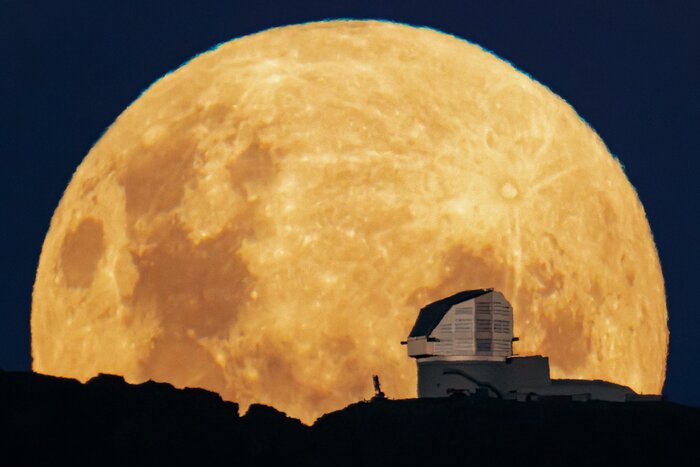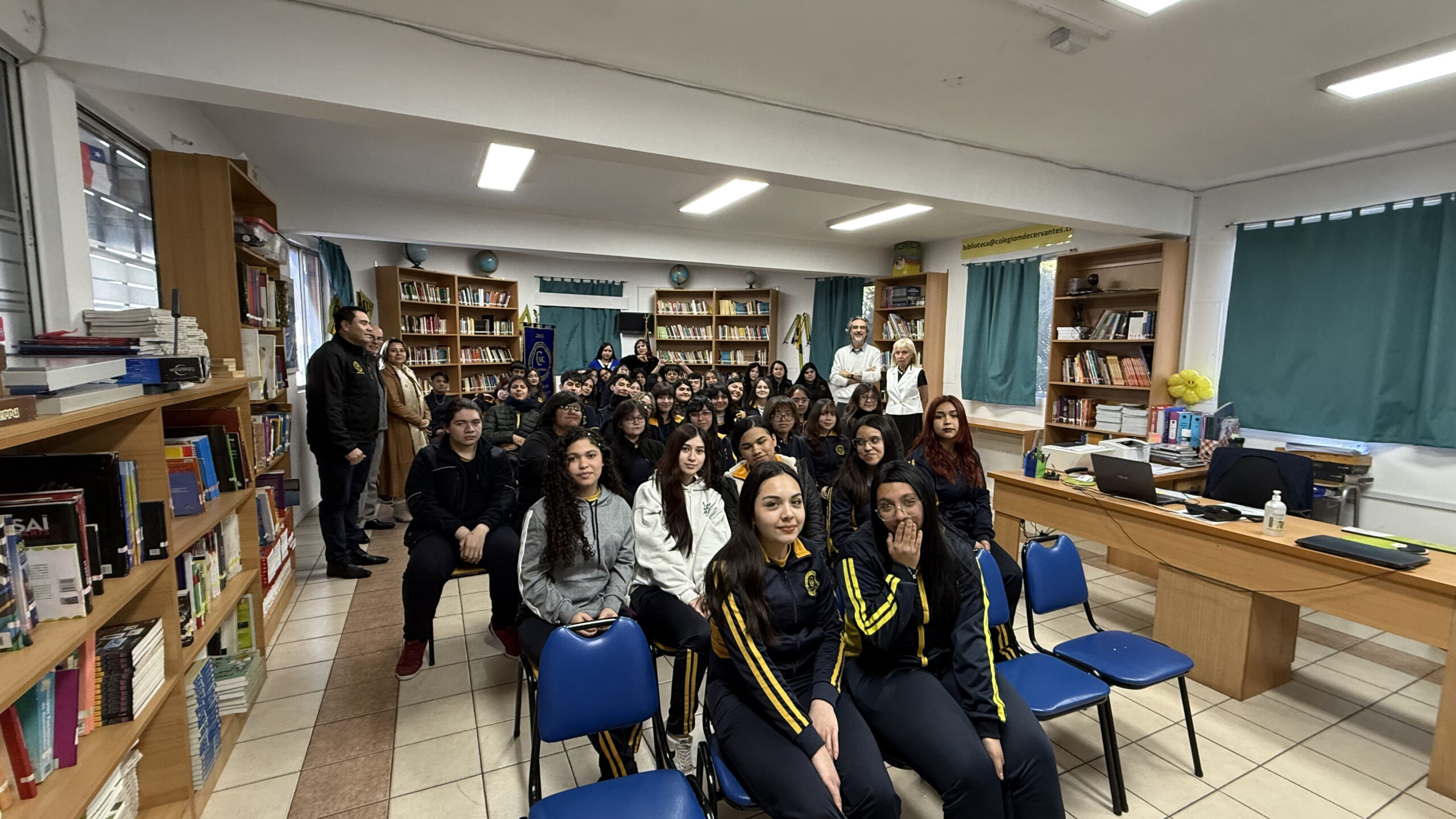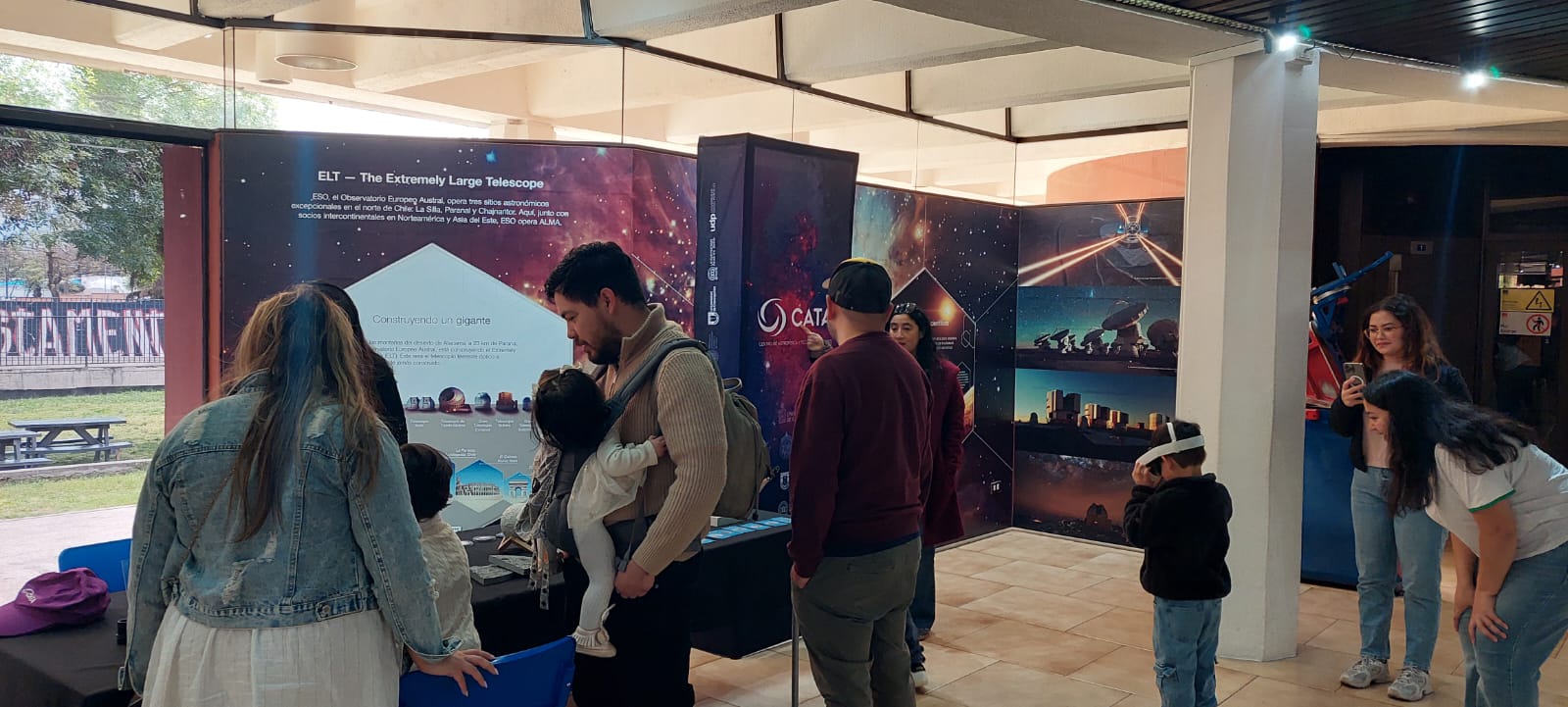
Rubin: The Universe’s First “Movie” That Will Transform Astronomy
From atop a mountain in Chile, an unprecedented telescope will scan the southern sky for ten years, creating the most comprehensive “movie” of the cosmos ever recorded. Equipped with the world’s largest camera, the Rubin Observatory promises to answer—and reshape—some of the most profound questions in modern astronomy.
The Vera C. Observatory Rubinfunded by the U.S. National Science Foundation (NSF) and the Department of Energy’s Office of Science (DOE/SC), is set to revolutionize our understanding of the cosmos. Perched atop Cerro Pachón in northern Chile, it will, over a ten‑year survey, capture an ultra‑high‑definition “film” of the southern sky using the world’s largest digital camera, recording transient phenomena, asteroids, variable stars, and yet‑unimagined mysteries.
The current Vera C. Rubin Observatory is named in honor of pioneering astronomer Vera Rubin. In the 1970s, her studies of galactic rotation provided the first robust evidence for the existence of dark matter. In recognition of her legacy, the U.S. Congress designated the observatory in her name in 2019—the first time a U.S. national astronomy facility has been named after a female scientist.
What makes the Rubin Observatory so special? Why Chile? What will it contribute to cosmic studies and to protecting our own planet? What might we discover? We explore these questions through the insights of researchers and astronomers from the Center for Astrophysics and Related Technologies (CATA).
Located over 2,600 m above sea level, Cerro Pachón (Coquimbo Region) offers clear skies, low humidity, and atmospheric stability—ideal conditions for cosmic observation. Chile contributes not only territory but also talent. Researchers such as María Celeste Artale, Timo Anguita, César Fuentes, Roberto Assef, Gaspar Galaz, Ezequiel Treister, and Patricia Tissera, among others, form a key part of the scientific team that will harness the Rubin Observatory’s potential.
What will Rubin do, and why is it revolutionary?
The Rubin Observatory will forever change how we view the sky. Unlike traditional telescopes that capture static images, Rubin will observe the universe’s evolution over time.
As astronomer Timo Anguita—Associate Investigator at CATA and professor at Universidad Andrés Bello (UNAB)—explains, “it’s not a survey that will be a single big image of the sky, but rather it will make a kind of video of the universe.” This is the key difference. “Rubin will tell how each object evolves over time,” he adds—highlighting a unique approach that sets this observatory apart.
Over ten years, Rubin will image each region of the southern sky approximately one thousand times, enabling real-time detection of stellar explosions, moving asteroids, and entirely new phenomena. “These events are rare, but with continuous sky monitoring, Rubin will increase the chances of capturing them at precisely the right moment. And I believe that will be truly revolutionary,” asserts María Celeste Artale, Adjunct Investigator at CATA and assistant professor at UNAB.
Every 15 to 30 seconds, Rubin will take a new image, generating tens of terabytes of data per night and accumulating more than 60 petabytes over the course of its operation. To process this avalanche of information, it will rely on machine learning tools capable of identifying patterns, transient events and subtle structures impossible to detect with human eyes alone.
Thanks to its speed and sensitivity, Rubin will scan the entire southern‑hemisphere sky roughly every three nights, building a time‑lapse “film” of the universe with unprecedented resolution. This unrivaled archive will allow us to understand cosmic change like never before.
How will Rubin use artificial intelligence?
The Rubin Observatory will produce tens of terabytes per night—far beyond what any human team could process alone. To confront this challenge, Rubin will pioneer the integration of artificial intelligence in astronomy.
Using machine‑learning algorithms, the system will detect subtle patterns, classify millions of celestial objects, and issue automated alerts for significant sky changes nearly in real time.
“Without automated tools, we simply couldn’t process this data tsunami,” warns Timo Anguita. “The challenge is enormous, but it also opens an unprecedented opportunity for AI to become part of astronomical discovery.”
Rubin will not only observe the universe like never before—it will interpret it with intelligent systems capable of revealing phenomena we cannot yet imagine.
What’s special about Rubin’s camera?
A cornerstone of Rubin’s ambition is its camera—the largest ever built for astronomy. At 3,200 megapixels, nearly one meter in diameter, and capable of capturing a sky area equivalent to 40 full moons in a single exposure, this camera marks a new era in cosmic observation.
Its extraordinary sensitivity allows Rubin to detect objects 10 million times fainter than what the naked eye can see.
But it’s not just about seeing further or in greater detail. What truly sets this camera—and the entire observatory—apart is its ability to detect changes in the sky. Supernovae at the moment of explosion, moving asteroids, variable stars, cosmic mergers, and gravitational lenses—all will be recorded, compared, and automatically flagged night after night. Rubin doesn’t just observe the sky—it brings it to life.
Astronomical alerts—what are they and why are they important?
The Rubin Observatory will generate automatic alerts whenever it detects a change in the sky—supernovae, moving asteroids, variable stars. Each night, the system could issue up to 10 million alerts, notifying the global scientific community in real time.
César Fuentes, Associate Investigator at CATA and faculty member in the Astronomy Department at Universidad de Chile, emphasizes: “What I most look forward to is having daily alerts that can be observed from Chile with our telescopes, even minutes after the phenomenon has occurred.”
Thanks to Rubin, the sky itself will guide nightly observations—opening new possibilities for Chilean observatory networks. As Fuentes explains: “Those in the best location will be pointing at these phenomena to astonish us with what, because it was improbable, we may not have discovered otherwise.”
These alerts will not only facilitate monitoring known phenomena—they will also open the door to discovering entirely unexpected events. “Asteroids explode, there are collisions in the Solar System, and Rubin should be able to find them and tell us when and where to look,” he adds.
Moreover, the sheer volume and data quality will help overcome one of astronomy’s historical biases. “It will allow observing without pre-selecting objects. That is, we’ll have a sample not biased by what we wanted to see, but by what is there.”
How will Rubin discover asteroids and protect Earth?
Rubin will usher in a new era in Solar System body detection. It will observe millions of objects, including small asteroids previously invisible from Earth. Its sensitivity and frequent coverage will enable real-time trajectory tracking.
“It will increase by a factor of ten the number of known objects in practically every category,” explains Fuentes.
But this advance isn’t only quantitative. Rubin will permit, for the first time, detailed studies on how certain asteroids fragment, how comets disintegrate near the Sun, and even capture collisions within the Solar System. “Just knowing where they are will make our life on this planet significantly safer,” Fuentes states.
What other Solar System bodies and phenomena will Rubin detect?
Besides asteroids, the Rubin Observatory will detect long-period comets from the Solar System’s outer regions—clues to solar system formation. “These comets come from the outer Solar System, and Rubin will enable us to spot them before they approach the Sun,” says Fuentes.
It is also expected that Rubin will identify interstellar objects (like ʻOumuamua—the elongated, reddish object about 400 m long that passed through our cosmic neighborhood in 2017). “We expect Rubin to find on the order of one to ten interstellar objects per year,” Fuentes notes.
Finally, Rubin could record real-time dynamic events—asteroids fragmenting via rotation or collisions among minor bodies. “There are objects spinning so fast they break apart, comets evaporating near the Sun, others that collide, and Rubin should detect them and tell us where to look,” he adds.
What do we know about Planet Nine, and how might Rubin find it?
For years, astronomers have hypothesized a distant ninth planet—beyond Neptune—whose gravitational influence could explain why certain objects have unusually clustered orbits.
The Rubin Observatory will systematically scan the southern-hemisphere sky with unprecedented sensitivity—ideal for detecting distant, faint, slow-moving bodies such as the hypothetical Planet Nine. According to Fuentes, this capability “will in one way or another answer the question of this planet—either by finding it or by proving it’s an observational bias.”
Additionally, Rubin will indirectly contribute by discovering hundreds or thousands of trans-Neptunian objects, enabling a much larger statistical sample to determine if these orbital groupings are truly anomalous or simply previously unseen. “We’ll have a much bigger sample to know whether those orbits are really strange, or if before we simply weren’t seeing well,” he explains.
How did the Milky Way form, and what can Rubin reveal about its history?
For Patricia Tissera, the Milky Way is key to understanding how galaxies form and evolve. “It is considered the Rosetta Stone of galaxy formation,” she states.
Rubin will observe billions of stars—reconstructing their positions, motions, and chemical compositions. This data will enable detailed studies of how the Milky Way formed through the merger of smaller galaxies. “We have evidence that the galaxy didn’t form all at once, but accumulated material over time, some of which remains in the stellar halo,” explains the astronomer, also Principal Investigator and Director of CATA and faculty at Pontificia Universidad Católica (UC).
Rubin will also allow the study of very ancient stars that retain chemical signatures from the early universe—tracing the origin of dark matter in our galaxy. “It will enable us to build the total mass distribution of our galaxy, and that will also give us information on dark matter,” she adds.
Moreover, the data will permit an unprecedented three-dimensional reconstruction of the Milky Way, combining observations with simulations to understand its dynamic history. “We will obtain data that we’ll compare directly with simulations. That will allow us not only to know which stars there are, but how they moved, how they formed, and what they tell us about the universe’s past,” she concludes.
What will Rubin reveal about dark matter?
Dark matter makes up most of the universe’s mass but does not emit light. Rubin studies it by observing how its gravity affects stellar motions and the bending of light in galaxies and clusters.
Patricia Tissera notes that within our own galaxy—the Milky Way—Rubin will allow the estimation of dark matter’s quantity and distribution. “It will enable us to build the total mass distribution of our galaxy, and that will also give us information about dark matter.”
What is dark energy, and how will Rubin help us understand it?
Dark energy is a mysterious form of energy driving the accelerated expansion of the universe. According to María Celeste Artale, it “accounts for about 68% of the total. We don’t know exactly what it’s made of, but we know it acts as a force accelerating expansion.”
Unlike matter, it does not interact with light, so its presence is inferred only through gravitational effects. It is one of cosmology’s major unsolved questions. “One of the things Rubin will contribute by mapping the sky at different epochs is allowing us to follow the evolution of cosmic structure over time,” Artale notes.
Rubin will study dark energy by observing galaxy clustering, weak gravitational lensing, and supernova brightness in distant reaches—observations that enable estimates of the universe’s expansion history. “That will help us determine whether dark energy is a constant or evolves over time—something we still don’t know,” she adds.
Will Rubin discover “invisible” galaxies?
Although many galaxies glow visibly, others are almost impossible to detect with conventional optical telescopes. Some emit mainly in radio, others consist of gas invisible to the human eye, or are extremely diffuse and ghostly in appearance.
Gaspar Galaz, Associate Investigator at CATA and faculty at UC, says “there are galaxies that appear as wispy ghosts because they consist of many stars spread over a huge area. There are also galaxies with little visible matter but lots of dark matter.”
By repeatedly imaging the same sky regions, Rubin will stack hundreds of exposures, improving its sensitivity to objects with very low surface brightness. “It will be possible to detect objects that are exceptionally diffuse or nearly invisible,” Galaz highlights.
This deep, repetitive observation strategy is ideal for studying little‑known or entirely new galaxies that were previously unseen.
How will Rubin study supermassive black holes?
Roberto Assef, Principal Investigator and Deputy Director at CATA and faculty at Universidad Diego Portales (UDP), explains that black holes emit no light, but their accretion disks do. Active black holes vary in brightness over days, weeks, or years—variability key to their identification.
Ezequiel Treister, Principal Investigator at CATA and faculty at Universidad de Tarapacá (UTA), notes that “these active galaxies—with growing supermassive black holes—have colors very different from normal galaxies, as well as stars. Therefore, with Vera Rubin’s images these colors will enable us to identify them.”
Rubin will repeatedly observe the southern sky, precisely detecting brightness changes in accretion disks—enabling identification of active black holes, both stellar‑mass and supermassive, even if their emission is weak or intermittent. “The ten‑year duration of the project will help us find a large population of growing black holes,” he states.
Beyond detection, Rubin will study how they grow, how their activity evolves over time, and how they influence the evolution of their host galaxies.
What will Rubin contribute to extreme phenomena like gravitational waves?
Rubin could also provide crucial information on extreme events—collapses of compact objects (neutron stars or black holes) that emit gravitational waves.
While Rubin doesn’t detect those waves directly, it can capture their optical counterparts—brief light flashes accompanying cosmic mergers. “I’d like Rubin to bring new knowledge on the connection between compact‑object collapses and the electromagnetic emission they produce,” says María Celeste Artale.
These events are rare, but continuous sky monitoring by Rubin will boost the odds of capturing them at precisely the right moment.
Recent news
-
 Publicado el: 10/10/2025Researchers from Area 2 of CATA hold annual meeting to plan for the next five years
Publicado el: 10/10/2025Researchers from Area 2 of CATA hold annual meeting to plan for the next five years -
 Publicado el: 09/10/2025Students from San Joaquín learned about the colors of the universe
Publicado el: 09/10/2025Students from San Joaquín learned about the colors of the universe -
 Publicado el: 07/10/2025Students from Miguel de Cervantes School explored the mysteries of the universe alongside an astronomer from CATA
Publicado el: 07/10/2025Students from Miguel de Cervantes School explored the mysteries of the universe alongside an astronomer from CATA -
 Publicado el: 05/10/2025CATA participated in the “100 Hours of Astronomy” event at the USACH Planetarium
Publicado el: 05/10/2025CATA participated in the “100 Hours of Astronomy” event at the USACH Planetarium -
 Publicado el: 03/10/2025Immersive astronomy talks were part of UC Open Campus
Publicado el: 03/10/2025Immersive astronomy talks were part of UC Open Campus
Categories list
- Acknowledgments 21
- Astrobiology 5
- AstroCluster 1
- Black holes 16
- Corporativo 54
- Cosmology 4
- Descubrimientos 22
- Disclosure 66
- Exoplanets 13
- Extension 4
- Galaxies 20
- Galaxies formation 5
- Inter y Transdisciplina 3
- Local Universe 15
- Publications 6
- Sin categorizar 36
- Solar System 18
- Stellar formation 8
- Technology 11
- Technology Transfer 14